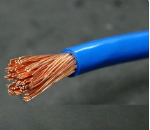Structural standard components, also known as fasteners, are essential parts in the mechanical field, widely used in various connection applications. Due to their numerous varieties, different performances, and high degree of standardization, serialization, and generalization, certain regulations must be followed when selecting standard components.
Firstly, let's define some basic terms. Screw fastening refers to the process of tightly combining threaded connection components with threaded fasteners using assembly tools, while ensuring a certain amount of pretension force. Pretension force is the force applied in advance in a connection to enhance the reliability and tightness, preventing gaps or slippage when the load is applied. Thread engagement length and thread protrusion are two important parameters of thread mating, referring to the length of the threads that engage with each other and the length of the external thread extending out of the internal thread, respectively.
In practical applications, threaded fasteners may fail, mainly manifesting as thread connection failure, fastener failure, and connector failure. These failure forms can lead to a decrease in mechanical performance and even affect the stability of the entire structure.
When selecting structural standard components, the following principles should be followed:
- 1. Principle of Economy: Prioritize the use of national and industry standards, and avoid using non-standard specifications as much as possible. Choose the most cost-effective standard components while meeting design requirements.
- 2. Principle of Assembly Convenience: Choose appropriate connection methods, such as riveting or threaded connection, depending on the situation, to improve assembly efficiency.
- 3. Principle of Reliability: Ensure the pretension force and connection reliability of the threaded connection, such as prioritizing the use of hexagon head screws or bolts.
- 4. Principle of Minimum Material Variety: Minimize the types and specifications of standard components to simplify the assembly process and improve management efficiency.
When specifically selecting types, the following points should be noted:
- • For connections between thin-walled structural adhesives and plastic parts, self-tapping screws are preferred.
- • Washers are mainly used to increase the contact area, while spring washers provide anti-loosening effects.
- • Pay attention to the material and connection strength when selecting blind rivets.
- • The thread direction of standard components is usually right-handed; left-handed threads need to be specially noted.
- • The pitch and surface treatment categories of commonly used standard component threads must comply with relevant standards.
In summary, the reasonable selection of structural standard components is of great significance for ensuring the performance and longevity of mechanical products. By deeply understanding and standardizing the selection of standard components, production costs can be effectively reduced, and product quality can be improved. In practical operations, we should strictly follow the relevant principles and precautions to ensure that the application of standard components in various mechanical products achieves the best results.





 Customer service 1
Customer service 1  Customer service 2
Customer service 2